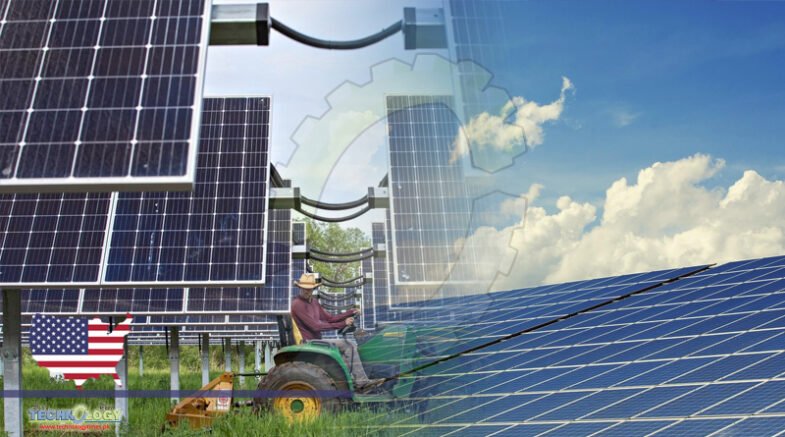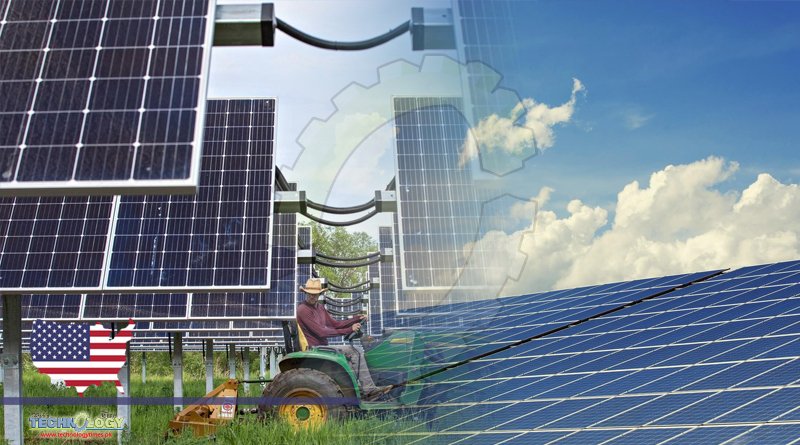The U.S. DOE announced $8 million for six solar energy research projects that will provide new economic opportunities for farmers, rural communities, and the solar industry.

The U.S. Department of Energy (DOE) today announced $8 million for six solar energy research projects across six states and the District of Columbia that will provide new economic opportunities for farmers, rural communities, and the solar industry. The funding supports agrivoltaics — the co-location of agricultural production and solar energy generation on the same land — and aims to reduce barriers to utility-and community-scale solar energy deployment while maximizing benefits for farmers and local communities.
By increasing access to solar energy, the new projects reflect the Biden-Harris Administration’s continued commitment to ensuring that every community unlocks the public health and cost-saving benefits of a clean energy future and support President’s goals to decarbonize the electricity sector by 2035 and achieve a net-zero emissions economy by 2050.
Department of Energy DOE’s research into agrivoltaics provides an incredible opportunity to pair solar energy generation with safe and robust crop production — ensuring rural communities reap the full economic benefits of a clean energy future,” said U.S. Secretary of Energy Jennifer M. Granholm. “With these exciting projects, we’re supporting sustainable agriculture and investing in the technologies that enable us to make our climate goals a reality — a win-win for our planet and hardworking farmers coast to coast.”
In the United States, less than 2% of solar energy projects are co-located with crops or pollinator habitats. In a recent report, researchers at DOE’s National Renewable Energy Laboratory highlighted the ecological and agricultural benefits that could result from improving agrivoltaic practices. The Foundational Agrivoltaic Research for Megawatt Scale (FARMS) funding program seeks to develop replicable models for agrivoltaics that can provide new economic opportunities while potentially reducing land-use conflicts. DOE is focused on making agrivoltaic practices across the country easier to adopt, lowering the cost, and maximizing benefits for farmers, rural communities, and the solar industry.
The projects selected for FARMS build on ongoing DOE-funded research, which is focused on conducting research, analysis, and dissemination of agrivoltaics best practices. The six projects will examine multiple configurations of solar system design, crops and cultivation methods, and soil and environmental conditions. Researchers will work with agricultural extensions and develop resources to spread the best practices to farmers and communities.
By selecting awardees with large extension networks, DOE aims to enable more collaboration among farmers, rural communities, and the solar industry. The six projects will conduct robust outreach to and engage with regional rural and farming communities, including Hispanic, Tribal, and immigrant farmers. These investments will advance diversity, equity, and inclusion — supporting President’s Justice40 Initiative to ensure that the clean energy economy benefits all Americans, especially those in underserved and underrepresented communities.
DOE analysis estimates that the United States will need to quadruple the amount of solar energy installed per year by 2030 to achieve the Biden–Harris Administration’s goal of a 100% clean economy by 2050. Please click here to explore all of DOE’s Solar Energy Technologies Office projects and here to learn more about DOE’s research into agrivoltaics.
Originally published at Clean Technica
